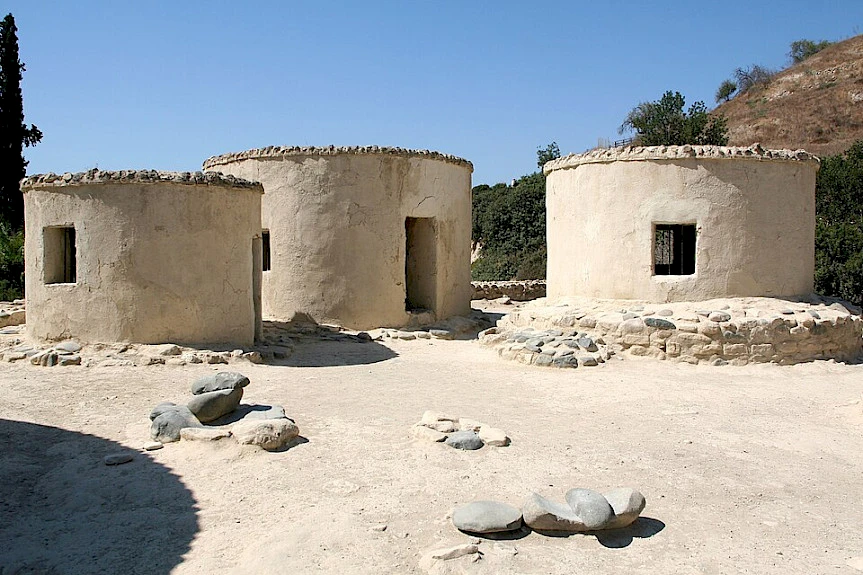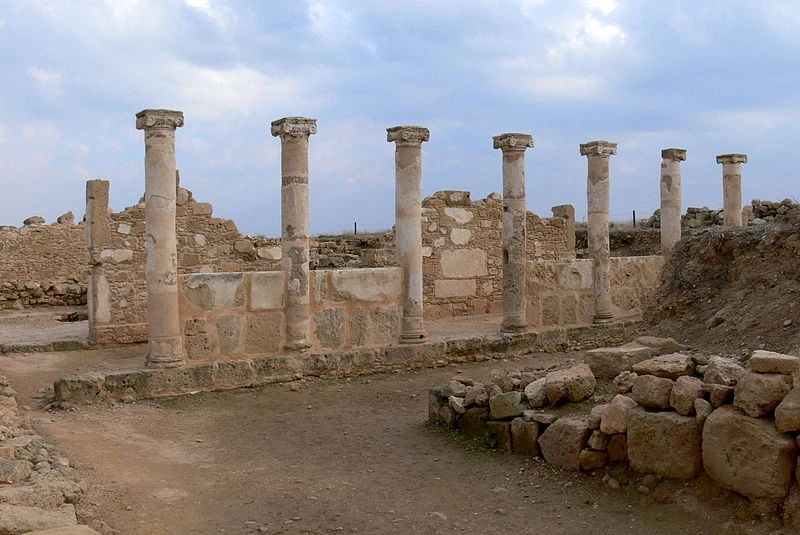UNESCO Sites in Cyprus
- Painted Churches in the Troodos Mountains
- Neolithic Settlement of Choirokoitia
- Ancient City of Paphos
- Why These Sites Are Worth Visiting
Painted Churches in the Troodos Mountains
Cyprus is an island where trade routes, cultures, and religions have intersected for centuries. Greeks, Phoenicians, Byzantines, and Venetians once met here, leaving behind temples, mosaics, and fortresses. Several landmarks of the island are included in the UNESCO World Heritage List, among which the painted churches of the Troodos Mountains hold a special place.
In the heart of the island, nestled within the Troodos Mountains, lies a unique architectural ensemble — ten Byzantine churches and one monastery, all inscribed on the UNESCO World Heritage List. Built between the 11th and 16th centuries, they have preserved outstanding frescoes and icons that are masterpieces of Byzantine art.

From the outside, these churches appear modest — stone walls, wooden roofs, tranquility, and mountain air. But inside unfolds a breathtaking world of sacred art: scenes from the Gospels, apostles, and saints depicted with remarkable expressiveness and purity of color. The frescoes have survived the centuries, retaining their vibrancy and spiritual power.
Among the most famous temples in the complex are the Church of St. Nicholas of the Roof (Agios Nikolaos tis Stegis), the Church of Panagia for Asinou in Nikitari, the Monastery of St. John Lampadistis in Kalopanagiotis, the Church of Archangel Michael in Pedoulas, and the Church of the Holy Cross in Pelendri. Each reflects the evolution of Byzantine painting in Cyprus and the influence of the Constantinopolitan school.
Visiting the churches of Troodos is not merely about exploring architecture — it is a spiritual journey into the heritage of the island, where faith, art, and history merge into one.
Neolithic Settlement of Choirokoitia
In southern Cyprus, between Larnaca and Limassol, lies the Neolithic settlement of Choirokoitia — one of the oldest archaeological sites in the Eastern Mediterranean. It dates back to the 7th–4th millennia BC and is considered an important testimony to the transition from a nomadic to a sedentary lifestyle.

The inhabitants of Choirokoitia built circular mud-brick houses with stone foundations. Each dwelling had several rooms: for sleeping, cooking, and storing grain. Archaeologists discovered pottery, stone tools, and burials here, shedding light on how the first communities in Cyprus were formed.
Choirokoitia is a window into the distant past. Walking among the stone foundations, you can imagine what one of humanity’s first settlements looked like. This archaeological site stands as a symbol of human ingenuity and the dawn of civilization on the island.
Ancient City of Paphos
Paphos is one of the most significant archaeological complexes in Cyprus, inscribed on the UNESCO World Heritage List. The city’s history dates back to the Neolithic period, and in antiquity it became an important religious center associated with the cult of the goddess Aphrodite.
According to legend, Aphrodite was born from sea foam near the rock of Petra tou Romiou. Later, a temple was built in her honor, becoming a major center of worship. Today, the Nea Paphos Archaeological Park preserves the remains of ancient villas, theaters, basilicas, and baths. Particularly valuable are the mosaics of the villas of Dionysus, Theseus, Aion, and Orpheus — masterpieces of ancient art depicting scenes from myths and legends.

Next to the park lie the Tombs of the Kings — underground burial chambers from the Hellenistic period, carved into the rock. Despite their name, they were not used for royalty but for members of the aristocracy. The scale and architecture of the complex are impressive — columns, arches, and decorative elements carved directly into the stone.
Paphos unites the history of several eras — from the Mycenaean to the Byzantine. It stands as living evidence of Cyprus’s cultural evolution, where each archaeological layer reveals a new chapter of the island’s past.
Why These Sites Are Worth Visiting
The UNESCO sites of Cyprus are not merely architectural monuments. They are the island’s story told through the language of stone, art, and faith. They reveal how Cypriot culture was shaped and why this small island played such an important role in the history of the Eastern Mediterranean.
Visiting these sites requires time and attention to detail. The Troodos churches are best explored in spring or autumn, when there are fewer tourists and the mountains are especially beautiful. In Paphos, it’s worth setting aside at least a full day to see the archaeological park, tombs, and the old harbor. The road to Choirokoitia is a journey spanning seven thousand years — to the very beginnings of human civilization.
Cyprus is an island where past and present coexist side by side. Here, you can see 11th-century frescoes in the morning and a sunset over the sea in the evening. This blend of antiquity and living modernity is what gives the island its unique charm.
